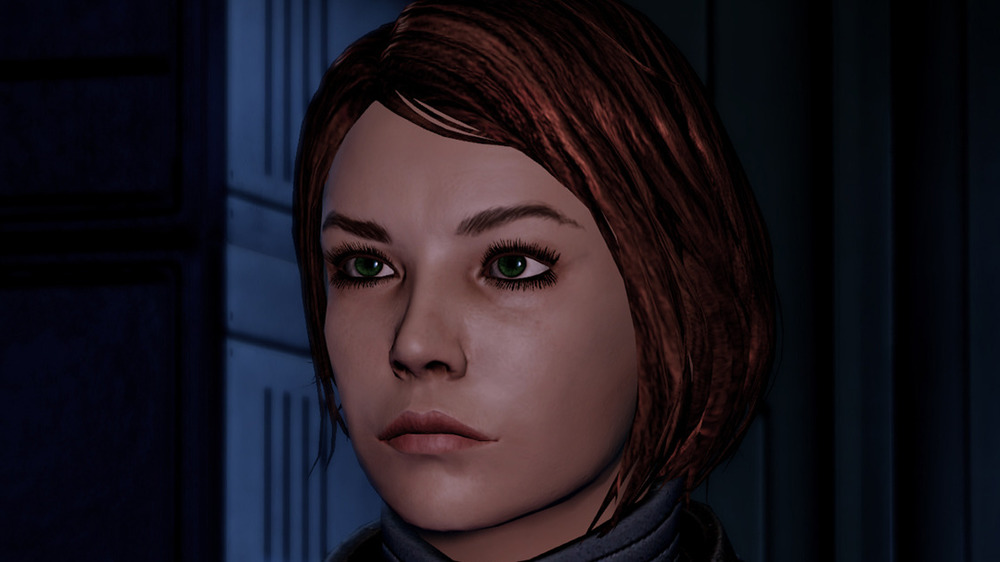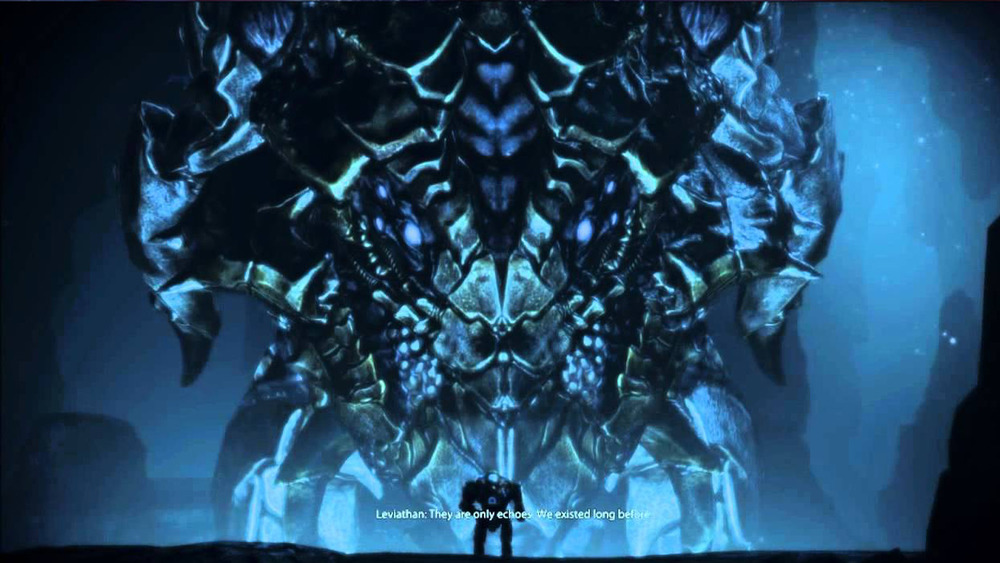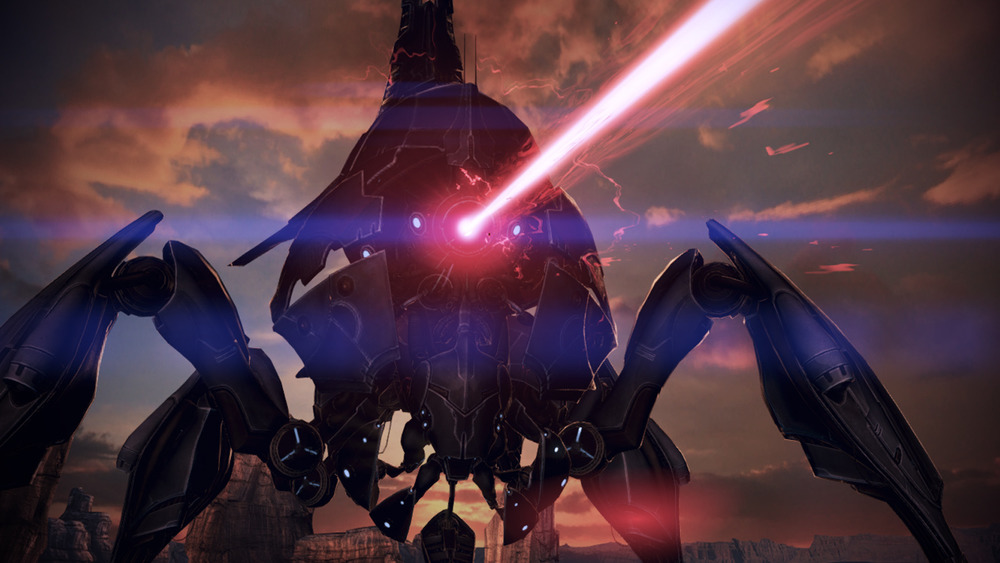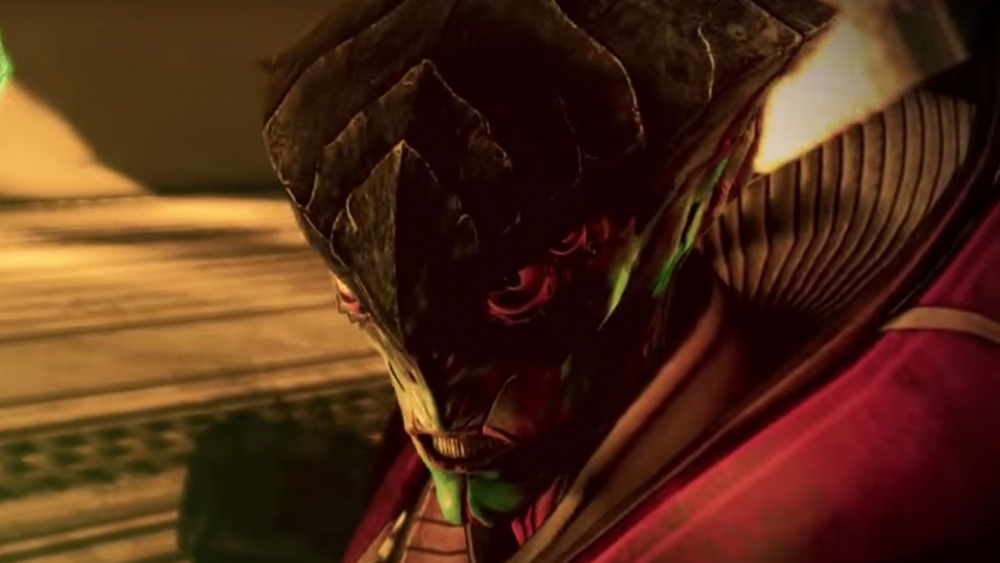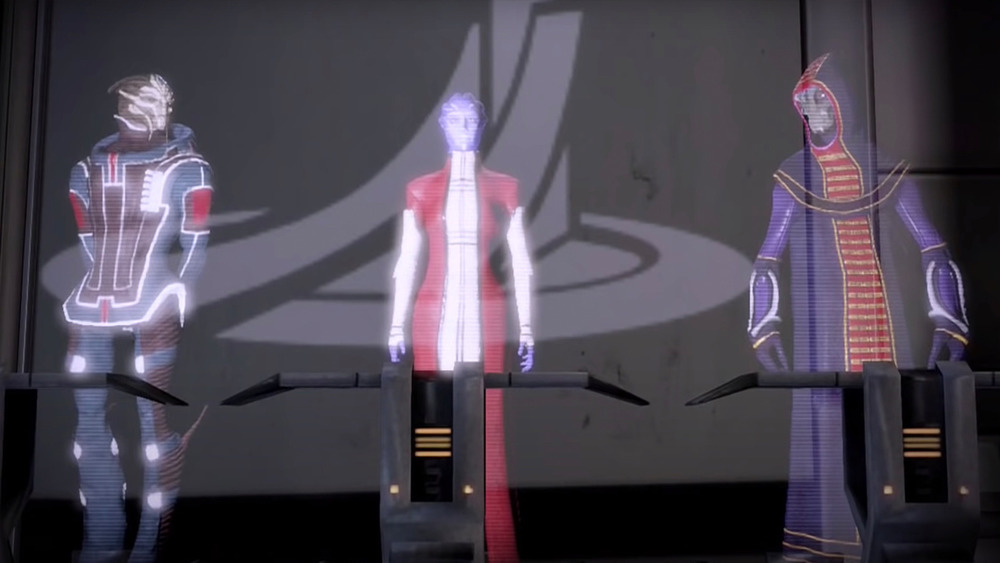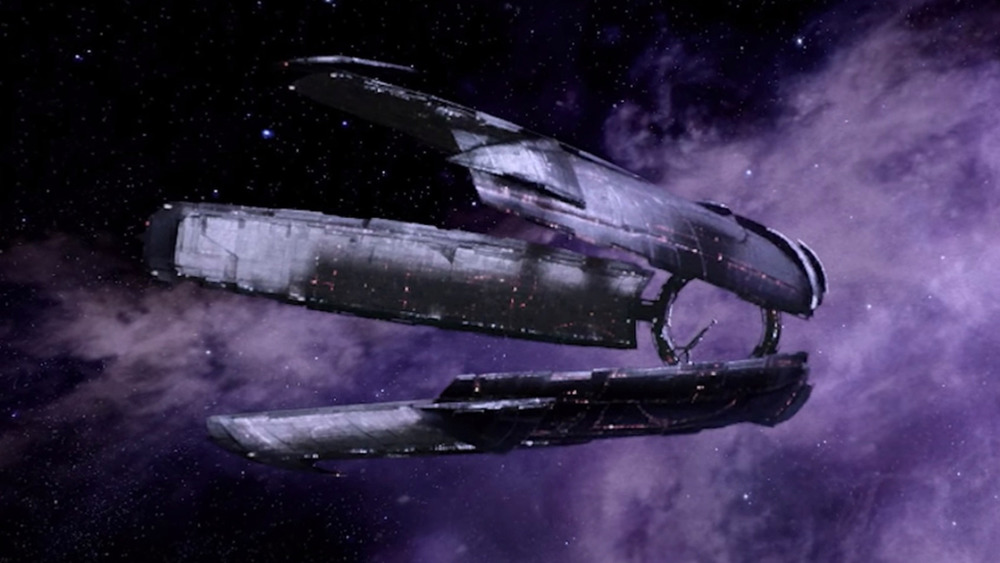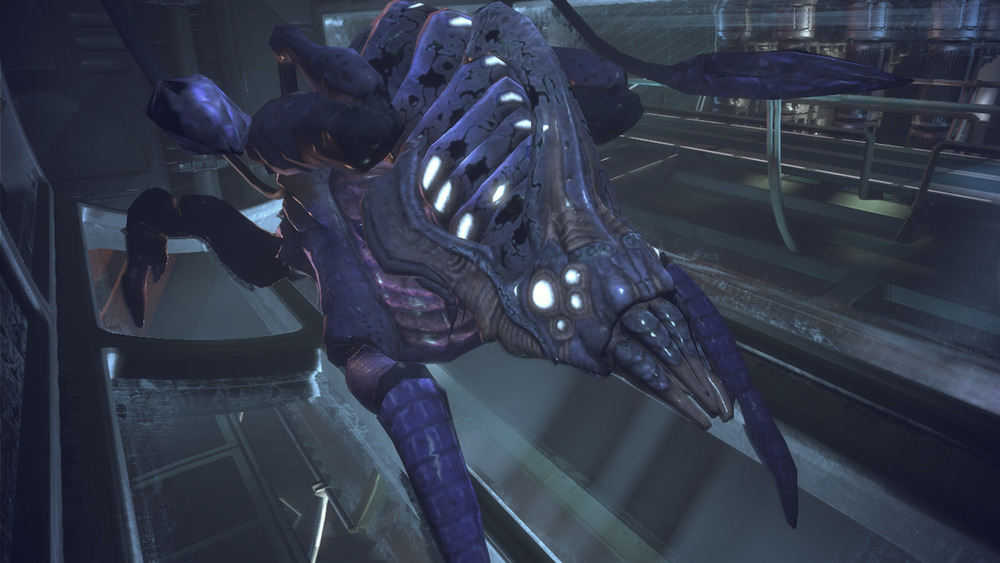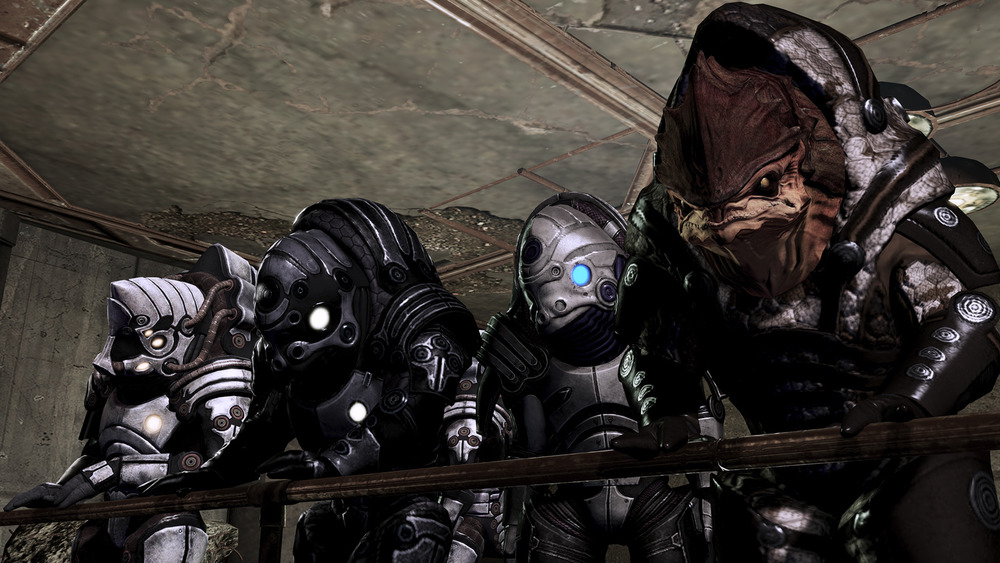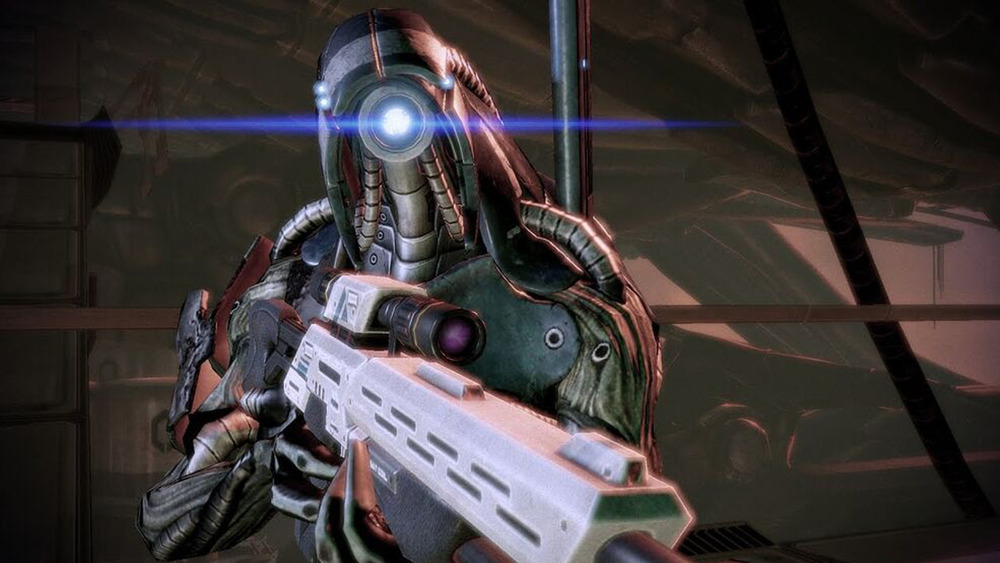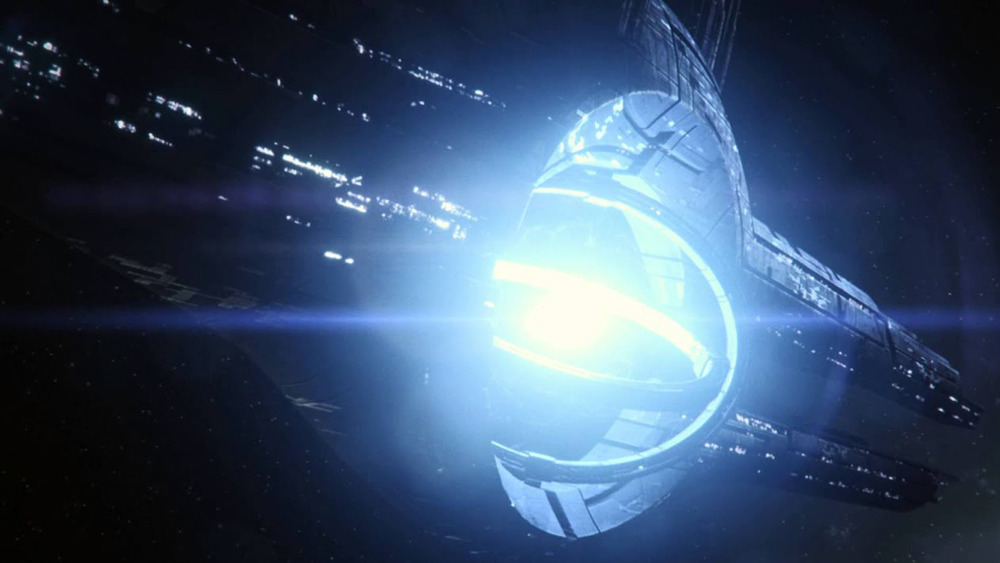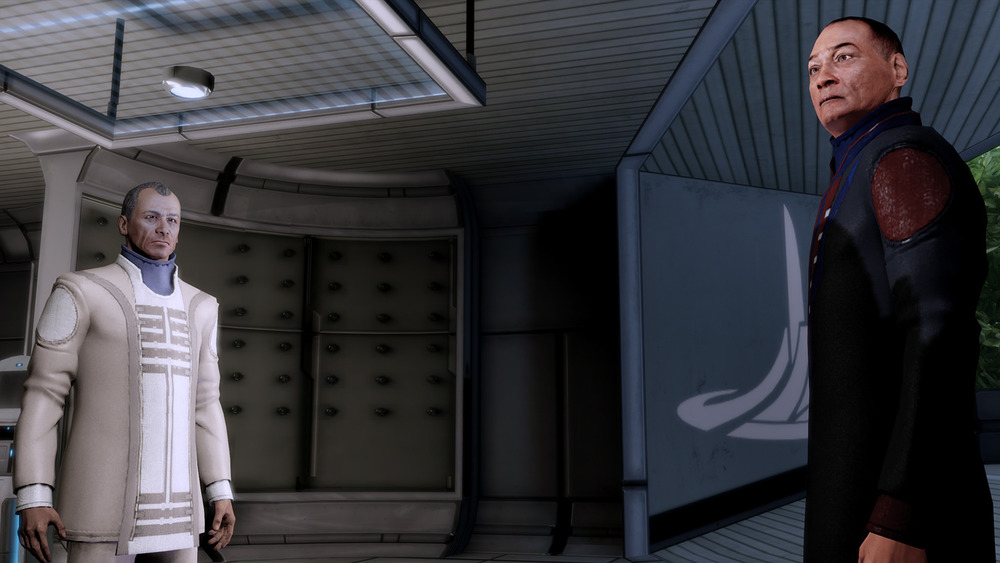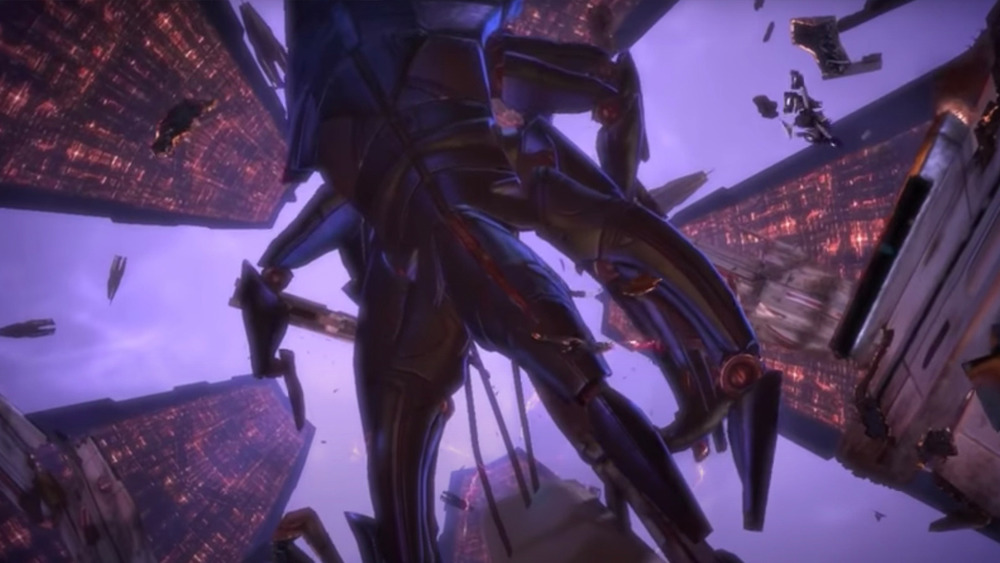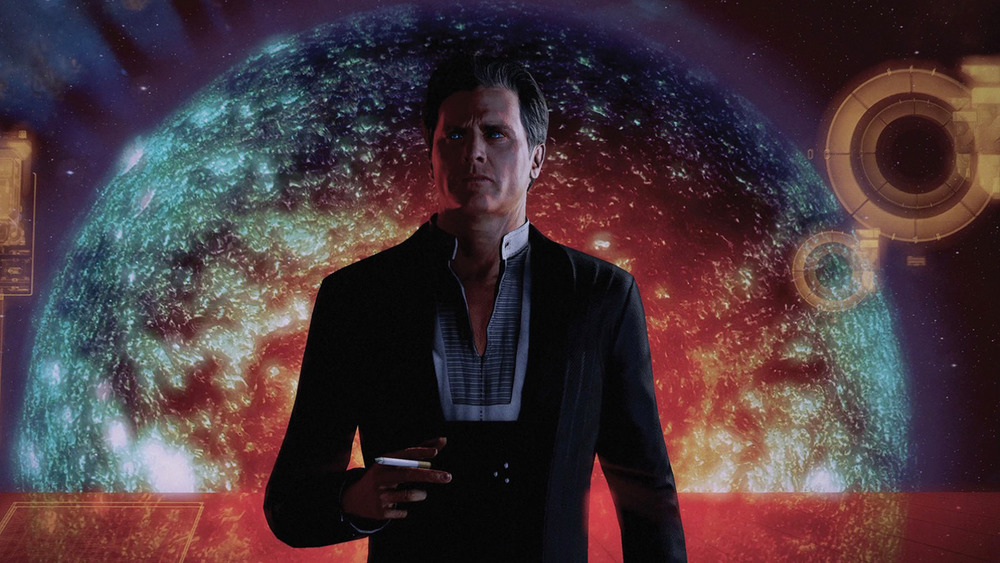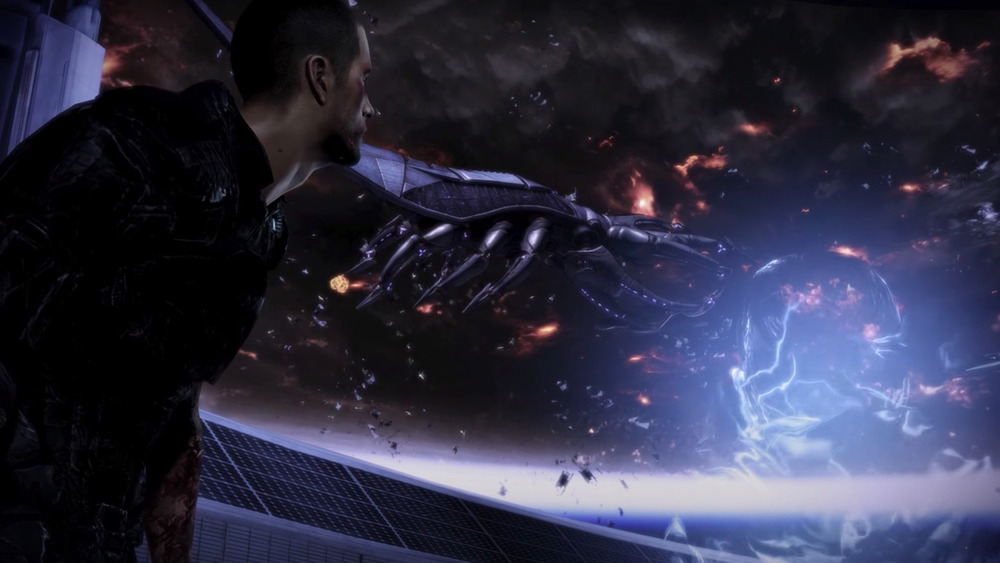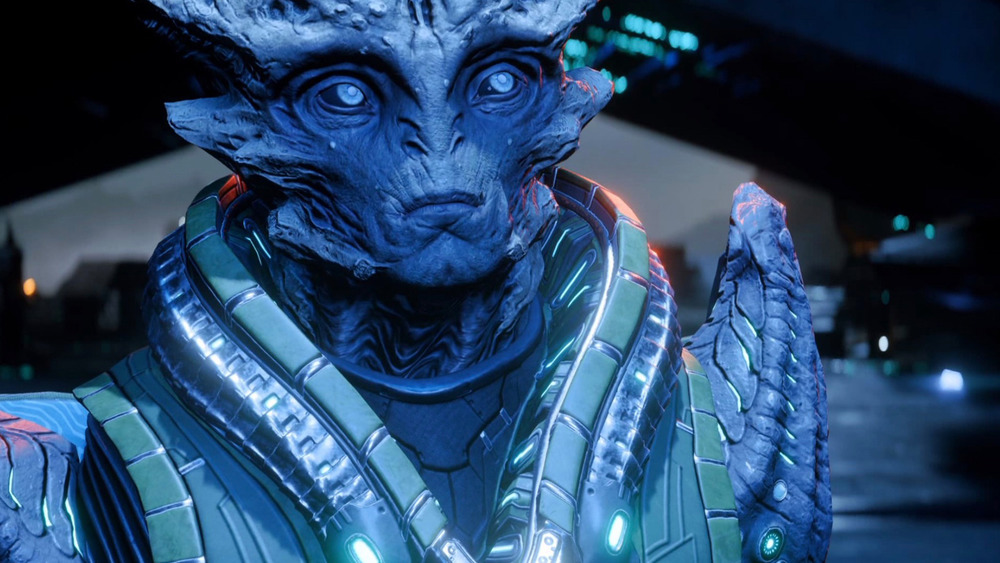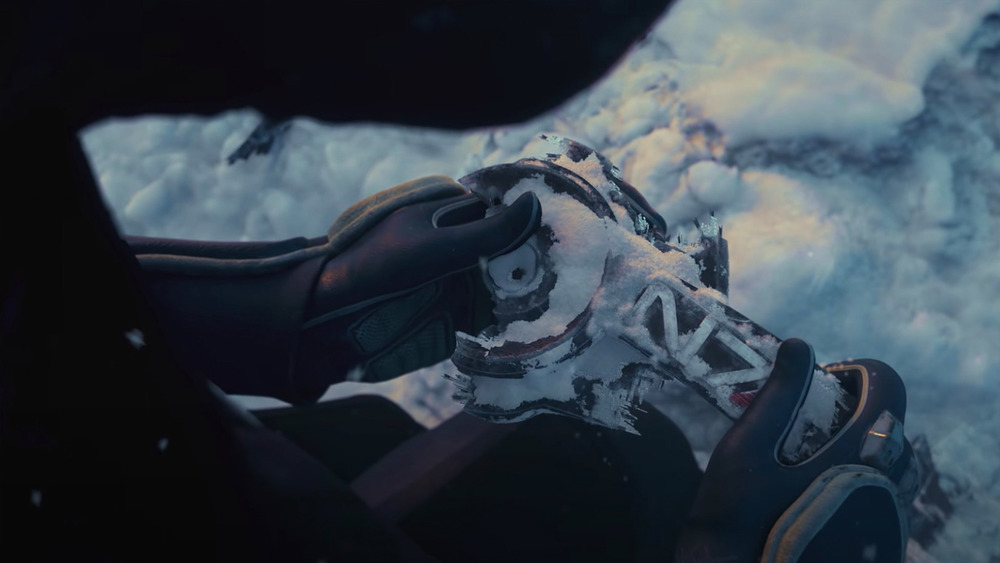The Entire Mass Effect Timeline Explained
Things are looking up for the Mass Effect franchise. In November 2020, developer BioWare announced an upcoming Legendary edition to be released in 2021. It will include remastered versions of the first three games, plus all the original DLC except for Pinnacle Station. Even better, BioWare shared a trailer for a new Mass Effect game at the 2020 Game Awards. This is huge news for a franchise that many had written off after the lackluster release of Mass Effect: Andromeda in 2017. Some believed the game's publisher, EA, was done with the franchise entirely.
With a new game on the horizon, it's a good time to brush up on Mass Effect's lore. Mass Effect has one of the deeper stories in video games, with a history spanning over a billion years. Knowing every little detail isn't necessary to enjoy the games. But the original Mass Effect trilogy emphasizes player choice, and making big decisions feels even weightier when you understand the motivations behind them.
The Mass Effect timeline might seem daunting to new players, but this guide has you covered.
The Age of the Leviathans (Unknown--1 billion BCE)
Mass Effect takes place in our galaxy, but Earth is just a tiny part of the story. The Mass Effect timeline started billions of years ago, with a race of super-intelligent squid-like beings called the Leviathans. They were the first known sentient species in the universe, and for eons they subjugated other races using mind control. The Leviathans were also the first to make the fatal mistake that many other species would make later.
The Leviathans wanted to guarantee the survival of their species, so they created an artificial intelligence called The Catalyst, which was tasked with preserving all life in the galaxy. The Catalyst predicted that all advanced societies would eventually destroy themselves. To prevent this, it decided to annihilate civilizations when they reach their peak, then harvest their genetic material and preserve it by turning it into organic starships. These living machines were called the Reapers, who would become the main villains of the original trilogy. The Catalyst's first victims were the Leviathans themselves, which is why most Reapers resembled them.
The player didn't find this out until the Leviathans DLC for Mass Effect 3. Until then, the origins of the universe and the Reapers were a mystery.
Many Cycles Of Reaping (1 billion BCE--68,000 BCE)
The Leviathans were just the beginning of the Catalyst's plans. Going forward, the Catalyst would allow new life to evolve in the galaxy until it was advanced enough to achieve space flight. After 50,000 years, the Reapers would return, wipe out the new civilization, and build more Reapers. When necessary, the Catalyst would intervene to help life evolve in the right direction. To help things move more quickly, the Catalyst built the Citadel and the mass effect relays — the floating hyperdrives that allow faster-than-light space travel — for future civilizations to discover.
The Catalyst hid itself in the core of the Citadel while the Reaping process repeated for millions of years. Each time, the Reapers covered their tracks. Every new species was unaware of the threat until it was too late. This was the case in Mass Effect 1-3. Most (but not all) characters didn't know the Reapers existed until the Reapers came for them.
The Age of the Protheans (68,000 BCE--48,000 BCE)
The Protheans were the most recent alien species to fall victim to the Reaping. They emerged around 68,000 BCE, when Earth was still in its last ice age. The Protheans became the dominant species in the galaxy and built an empire by subjugating other planets. When the Reapers arrived, the Protheans tried in vain to preserve their civilization. Some tried to develop weapons to stop the Reapers, while others tried to leave warnings for future civilizations to find. In the end, most Protheans were harvested. Those who weren't became indoctrinated and evolved into a new species called the Collectors, one of the enemies in Mass Effect 2.
In the original Mass Effect trilogy, the galaxy was full of mysterious Prothean ruins, many that stored indecipherable information. Since the Protheans were the only known precursor species, the people of the galaxy believed they were the ones who built the mass effect relays and the Citadel.
As of Mass Effect 3, the Protheans technically weren't extinct anymore, since that game added the resurrected Prothean Javik as an unlockable squad member.
Emergence of the Council Races (48,000--500 BCE)
When humans finally achieved space flight, they were surprised to learn that the Milky Way was already governed by a coalition of three alien species at the Citadel, who ruled over many more alien species. All of these spacefaring alien societies first emerged in the years following the annihilation of the Protheans.
The asari were the first to arrive at the Citadel in 580 BCE. The asari are the all-female species with a lifespan of up to 1,000 years. They specialize in using biotics, the biologically powered magical abilities in the Mass Effect games. During Mass Effect 3, it was revealed that the asari were a rudimentary species during the Prothean era. The Protheans biologically elevated the asari during the Reaper war in an attempt to create a potential new ally.
Fifty years after the asari, the salarians arrived at the Citadel. They're the warm-blooded amphibian species who specialize in technology weapons and science, and in one case, love Gilbert and Sullivan. RIP, Mordin Solus.
Founding of the Citadel Council (1 CE--300 CE)
While Earth was still in the Bronze Age, the asari and the salarians established the Citadel Council, the Milky Way's first intergalactic government. Over the next few centuries, more and more species developed space travel, discovered the mass effect relays, and arrived at the Citadel — for example, the volus, the elcor, the hanar, and the quarians. These species all established embassies at the Citadel, though they didn't have much political power. This established the uneven power dynamics that played out over the course of the series.
Although they still wouldn't make contact with the Council for another millennium or so, other species developed into advanced civilizations during this time also, including the turians and krogans. The Turian Hierarchy pacified all the turian colonies in the Unification War, while the krogans turned their home planet Tuchanka into an irradiated wasteland after multiple nuclear wars.
The Rachni Wars (1 CE - 300 CE)
The galaxy was full of mass effect relays that lead to unknown locations across space, many more than the ones the Citadel species used. Around 1 CE, salarian explorers activated a dormant mass effect relay that opened up a space portal to an insectoid species called the rachni. According to the Citadel Council, the rachni were belligerent and invaded the Milky Way, starting the Rachni Wars. However, the Rachni Queen later claimed her people were manipulated into the war, which wound up being true. Either way, the rachni were highly intelligent and immediately overwhelmed the Council species collective militaries.
The salarians found a solution when they discovered the krogan, a brawny reptilian species made up of warring clans. With salarian space travel technology, the krogan joined the wars and wiped out the rachni. But this only led to more problems when the krogan then began colonizing worlds that belonged to other Council species.
As for the Rachni, they were thought to be extinct. But during Mass Effect 1, Commander Shepard discovered that the long-lost Rachni Queen was still alive and had the option to spare her. This was one of the first "big decisions" that played out over the trilogy.
The Krogan Rebellions, and the turian arrival (700-900 CE)
The Krogan Rebellions against the Citadel Council began around 700 CE and dragged on for two centuries. The krogan had been the Citadel's original military and peacekeeping force, so the remaining Citadel forces needed someone to fill that role to stop the krogan threat. They contacted the turians around 800 CE. They're the bird-like race organized into a militaristic society. They entered the fight and brought the war to a stalemate.
To end it, the salarians came up with a grim solution: a DNA-based biological weapon called the genophage. The turians unleashed the genophage on Tuchanka, and soon only one in 1,000 krogan pregnancies came to term. Unable to replace their massive losses in the Rebellions, the krogan retreated to Tuchanka, where the genophage still plagues their species. Commander Shepard had the option to change that during Mass Effect 3.
After the war, the Council avoided the same mistake they made with the krogan and promoted the turians onto the Citadel Council as the third member species.
The Geth War (1858-1895 C.E.)
Humans still barely knew how to use electricity, but galactic politics rolled on. The quarians are a non-council mercantile race, and around 1858 CE they created a species of networked a.i.'s called the geth. Originally the geth were non-sentient but eventually evolved to have a group consciousness. In keeping with the themes of the franchise, the geth rebelled against their creators. The geth drove the quarians from the quarian homeworld, then retreated to deep space. Without a home world, the quarians built the Migrant Fleet, a group of thousands of merchant ships they use to travel the galaxy. Commander Shepard met squad member Tali'Zorah while she was undergoing her Pilgrimage, a quarian rite of passage.
Like the rachni, the geth are one of the most misunderstood species in the series. They were thought to be warlike but in reality were manipulated into conflict. Shepard would eventually to decide the geth's fate, allowing them to establish their own home world, or wiping their collective memories entirely.
Humans discover the mass effect relays (2148 CE)
Well into the future, humans finally began to develop space flight, and by the end of the 21st century Earth colonized the rest of the solar system. Humans formed a system-wide government called the Systems Alliance, uniting the entire human species across twelve colonies, including major habitations on the moon and Mars.
It took almost another half-century for humanity to discover the mass effect relays. In 2148, an expedition to Pluto discovered that its moon of Charon was actually an ancient mass effect relay. In 2149, Earth sent a team of astronauts through the Charon Relay. Humans continued discovering active mass effect relays and expanding further into the Milky Way. The other species in the Milky Way had been monitoring humans for some time, but didn't make contact.
Also, Commander Shepard was born during this period, on Apr. 11, 2154. Shepard was among the first generation of humans to make contact with other intelligent species in space.
The First Contact War (2157 C.E.)
In 2157, humans attempted to activate a dormant mass effect relay. This unknowingly broke Citadel Council law — the salarian explorers who provoked the Rachni Wars millennia ago started it by activating a dormant mass effect relay as well, allowing the previously unknown rachni to enter the Milky Way. After that, the Citadel made dormant relays off-limits.
Humanity's first contact with an alien species was a conflict appropriately named "The First Contact War." The fight was brief but had long term consequences. The Citadel Council and other Citadel species viewed the human species with suspicion. In the Systems Alliance, the war led to the creation of extremist pro-human groups like the Terra Firma Party and Cerberus, the private military contractor led by the fanatical Illusive Man. But despite the mistrust on both sides, the Systems Alliance and the Citadel made a peace treaty. Humanity established an embassy on the Citadel, where they were viewed as just another second-class species.
This First Contact War is explored in the novels Mass Effect: Revelation and Mass Effect: Evolution.
The Eden Prime War (2183 C.E.) - Mass Effect 1
The first Mass Effect game was released in 2007. The story began a generation after the First Contact War. In the game, the geth emerged from death space and launched a surprise attack on the human colony of Eden Prime. Commander Shepard, a human N7 military officer, was nearby investigating a Prothean ruin and defended the colony.
Meanwhile, Saren Arterius, a turian and Council special agent (called a SPECTRE) had gone rogue. The Council assigned Shepard to investigate, making Shepard the first human SPECTRE in the process. Shepard learned that Saren was leading the geth and wanted to wipe out humanity after the accidental death of his brother Desolas in the First Contact War. To do it, Saren needed to locate an artifact called the Conduit.
Shepard also learned that Saren's flagship, a ship called Sovereign, was actually a Reaper controlling both him and the geth. Sovereign needed Saren to activate the Conduit and allow the Reapers to return from deep space and start the next Reaping cycle. Saren and Sovereign attacked the Citadel, and Shepard barely defeated them. The player chose whether to save the Council or let them die. If the Council died, a new one replaced them in Mass Effect 2. Either way, humanity was elevated to a Council seat.
Shepard's Death and Rebirth (2185 CE) - Mass Effect 2
Mass Effect 2 was released in 2010. Picking up shortly after the last game, a frustrated Shepard couldn't convince the Citadel Council that the Reaper threat to the galaxy was genuine. Instead, the Council was concerned with a more immediate threat. Once again, a mysterious new species had emerged from deep space and began attacking human colonies. This time it was the Collectors, who were harvesting human victims for mysterious purposes.
Then, a Collector ship attacked Shepard's vessel, The Normandy, and destroyed it, killing Shepard in the process. The xenophobic pro-human extremist group Cerberus recovered Shepard and brought the hero back to life. In exchange, Cerberus and their leader, the Illusive Man, wanted Shepard to investigate the Collectors and their origins.
It turned out the Collectors were an unintelligent drone race created by the Reapers out of the genetic material from the Protheans. The Collectors were led by another Reaper called Harbinger, who wanted to use billions of humans to build a Human Reaper. Shepard and company eventually defeated Harbinger, but when the game ended, the massive Reaper fleet arrived from deep space to wipe out all life.
Showdown with the Reapers (2186 CE) - Mass Effect 3
Mass Effect 3 came out in 2012 and brought the trilogy to a close. In the game, Shepard united the galaxy in an all-out fight for survival against the Reapers. Many of the player's earlier decisions affected the war with the Reapers, like whether they spared the Rachni, converted the geth, or cured the genophage.
The game also delved into the mystery of the Protheans. Shepard discovered that at the end of their war against the Reapers, the Protheans had been building a massive Reaper-killing superweapon called the Crucible. Shepard finished building the Crucible and the species of the Milky Way launched a final assault on the Reaper fleet.
Shepard, meanwhile, found the Catalyst, and the Catalyst gave Shepard three choices to deal with the Reapers. These were originally the three possible endings: "Destroy," wiping out all synthetic life in the galaxy, including the Reapers; "Control," in which Shepard's consciousness was uploaded into the Reapers; or "Synthesize," which combined the DNA of all life in the galaxy with that of synthetics to create an immortal species. The Extended Cut DLC included one more ending in which Shepard refused the decision and allowed the Reaper menace to continue.
"Destroy" was the only ending in which Shepard was hinted to have survived the Reaper war. Years in the future, Shepard became a mythical figure.
The Andromeda Initiative (2185 CE - 2819 CE) - Mass Effect Andromeda
Between Mass Effect 2 and 3, the four Council races and the quarians worried that the Reapers would destroy life as they knew it. To preserve their species, they launched expeditions to colonize planets in the Andromeda Galaxy, an entirely new galaxy unaffected by the Reaper menace.
Mass Effect: Andromeda was launched in 2017. The story began when the colonists woke up from their 634-year journey to find Andromeda nearly uninhabitable because of a weather phenomenon called the Scourge. Worse, an antagonistic species called the kett were hunting for artifacts left by the mysterious Remnant civilization, which would let them control the Scourge. The player controlled either Sara or Scott Ryder, children of the human colony ship's leader. In the game, they teamed up with the oppressed angara species to stop the kett and build a hospitable home world.
Andromeda had a post-credits cutscene that indicated the story could continue in a future game. It has yet to be revealed if that will hold true.
Rebuilding (2186 C.E. - ?) -- Mass Effect 5
This is where the timeline ends and speculation begins. Not much is known about the untitled fifth Mass Effect, but the teaser-trailer released on Dec. 10, 2020 had some clues. The trailer showed original trilogy squad member Liara T'Soni sifting through the snow on an unknown planet. There, she discovered a fragment of Shepard's iconic N7 armor.
Liara's presence and Shepard's armor would seem to confirm that it will take place in the Milky Way, when the galaxy begins to rebuild from the Reaper war. Liara's presence doesn't offer much help for dating the game: the asaris' famously long lifespans mean she could be finding the armor centuries after the trilogy ended. Additionally, if Shepard really did survive the events of Mass Effect 3 like the teaser implies, it would also seem to make the "Destroy" ending officially canon.
Either way, it seems unlikely the Ryder saga will continue in the upcoming game. The journey to Andromeda takes 634 years, so even if the Ryders could come back to the Milky Way, the earliest they could arrive would be around 3400 CE. Even asari don't live that long.

